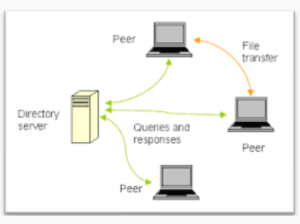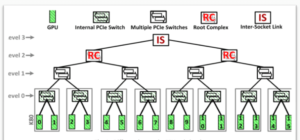If you’re fed up with that paperwork of banks to get a loan and long lines in traditional banks, we have got a better way for you: Peer to Peer platforms. It is also known as the P2P policy. These are the trademarks of modern banking solutions. Connecting borrowers with lenders over the net, it’s a flourishing nascent industry. It is both ways of smart business. It connects borrowers with lenders over a server. Lets read about Peer to Peer Lending in detail.
What Do You Understand By P2P Policy?
In this article
Peer to Peer lending aids you in getting loans from other individuals. These get carried out online. It is one of the trending ways of financing these days, in other words, also known as social lending. It connects borrowers to lenders.
P2P loans are applied for under personal loans. It’s used mostly by small businessmen. A user of the P2P platform is otherwise called a “peer.” The peers get connected by TCP or UDP connections. The lenders and borrowers get connected by the digital world.
Here, TCP and UDP connections refer to the connection types. In TCP, data gets sent bi-directionally, whereas UDP is simpler. It is a connectionless setup. Multiple messages are sent in UDP.
The terms and conditions of the transaction vary from site to site. You can be an investor in some sites or can create a concrete financial institution to become a Peer to Peer lender. You can earn from the interest paid by the borrower.
Peer to Peer lending is a modern online way of banks. It connects you with the borrower or lender, sitting at home. Since it is a completely online platform, there are better chances for both sides—golden fruits for the borrower and the lender. You can earn higher interest by lending, whereas borrowers can too enjoy better rates.
How Does It Work?
Unlike financial institutions, P2P lends loans to certain qualified applicants. You’re provided loans by some willing set of individuals or groups. You need to provide your qualifications, no of dependents, etc. details to the lender. Various criteria decide your sincerity. Listed down below.
A P2P architecture connects hardware to the software without any server need. You don’t need any central server for its connection.
Thus in a P2P platform, if you make a request, there are fair chances of getting many such requests. Thus, the P2P platform collects the IP address of such networks. The platform gets attributed to the underlying object of collecting such IP addresses. By this, you can know who has requested under the same criteria as well.
P2P works with a web of three such architectures-
- Centralized Directory
- Query Flooding
- Exploiting Heterogeneity
1. Centralized Directory
Under the centralized directory, there lies a huge directory service. It maintains a client-server architecture.
It is the main field where you share your files; requests get transferred for sharing. It makes regular connections with you to make sure you’re connected.
This architecture connects huge peers, sharing databases.
Working procedure: So, this stage has all the requested databases. Here only you share all your requests, right. Thus, the centralized directory is the encyclopedia of all the databases and requests.
Whenever it finds another network of the same request, it connects them. The file transfer then takes place between those two peer networks.
Yet, with every advantage, there lies a disadvantage. Since it has a single central directory, one collapses, all fail. Added to that, it also needs a regular update of databases. Like a single earner in a family of 10.

2. Query Flooding
Query flooding functions as a distributed system. It is more systematic and less loading than a centralized directory. It has no such central server, but branches followed.
In this, if you’re connected to another peer, you become a part of that overlay network. In such Overlay networks, peers are referred to as nodes. The connection that exists between one and the other is called edge. Thus it represents a graphic structure.
Working procedure: Unlike a Centralized directory, there is no such central trunk.
Once you send a query or request, it gets shared with your neighboring nodes. If it is not resolved with your neighboring nodes, they share it with their neighboring nodes. It keeps on spreading until it hits the spot. Once the required file is found, it gets retraced in its direct path to you.
Making it more clear, just imagine a class of children. Each one has a spiral book to be filled-up by every friend. You pass it to your side friend, but he has filled it. So, he passes it on to his neighboring friend, and he too has filled it. Thus, he passes it to his nearby kid. Now, he hasn’t filled up. So, he fills it up and returns the spiral directly to you.
Now you must be thinking, what in case there are many query hits? Then let me tell you, you’ve many options. You can search through and choose the best suitable.
Like a centralized directory, it has some problems too. Since there is no central trunk for its functioning, it keeps on getting shared. This further increases the traffic until a query hit’s traced.

3. Exploiting Heterogeneity
Exploiting heterogeneity is a combo pack of the above two.
Like query flooding, it has branches and no central trunk. But it doesn’t treat all its peers in an equal manner. The treatment gets divided between the group leader and the rest. These rest get allocated under supergroups.
While the group leaders enjoy biriyani, the rest get served with rice and dal. Okay, this was my poor sarcasm!
It gets divided based on wider bandwidth and stronger network connectivity.
Again like the centralized directory, these supernodes get assigned with the leader. The peers send all their requests, databases, files, queries to the central leader. Then the central leader functions as a central server in searching for the required file.
Working principle: This architecture exploits the heterogeneity. It works by distinguishing into two groups as group leaders and child peers.
In the first group, the merging of several supernodes occurs. The peers under them make a large group by merging their databases, files.
Whereas in another approach, when you send a query, it gets circulated. First, it’s transferred to its neighboring nodes. Then it gets carried forward until it hits its resource. The scope is quite limited, as there is huge traffic exhibited by many child peers.
Like other architectures, it has its own drawbacks. The distinction between group leaders and child peers pose great discouragement.

RBI’s Latest Guidelines On P2P Lending Platforms
RBI is the GOD of all the financial transactions going throughout the country. With the increase in demand for the P2P platform, it has released few improvisations. The leading and progressing path of P2P led to the formulation of certain rules. These rules made things stiffer and secure. Attracting more peers, it has become one of the leading financial institutions. Thus RBI gave a single blow to the lenders, abiding to follow certain strict lending guards.
According to the new norms of RBI, you cannot lend more than Rs. 50 lakh to all your borrowers at a time. It was thus put as a barrier to its flexibility, making it stiff and secure.
Even if you lend more than Rs. 10 lakh, you’ve provided a certificate showing your small net worth of Rs. 50 lakh. Across all NBFC Peer to Peer platforms capping of a borrower is made at Rs. 50,000. There were several queries about the increase in the amount. Yet they’re constricted to an Rs. 10 lakh bond.
This made them open up several accounts in the name of their family members. Of course, this desperation is to earn more. These new improvisations make sure you’re at a safer place even if one investment goes at a loss. The enhanced limit aims at easing the credit supply.
It further creates a diversified portfolio for some ultra-legend riches. This has also resolved the escrow bank issues. Escrow banks are the third party in a transaction between two. There must be two escrow accounts. One from the borrower side and the other from the lender. It holds any asset or money on behalf of two. Assets here include money, security, etc.
Earlier, peers lacked choice and had to invest either in ICICI or IDBI bank. It further leads to a high cost. With the P2P digital platform, you can get better returns.
Plus, you’ve to submit a declaration. It states that you’ve understood all the risks and information associated. The declaration also says the platform doesn’t assure for profitable return of principal.
You might get a question boating your qualifications, dependants, expenditure needs. Several factors are deciding your defectiveness.
Another major goal is to restrict cash transactions through banks.
All these factors round up to a single conclusion, serving more customers.
Some Key Details Mentioned Below:
- The RBI aims at a strong rigor among the participants.
- Undertakes easy credit assessment.
- Accord risk-free transaction with strict document verification.
- Provide services for loan repayment.
- You cannot lend a total of Rs. 50 lakh to your borrowers.
- Lending more than Rs. 10 lakh, you must provide a certificate of authorization. Which must be from an authored chartered account stating a minimum net worth of Rs. 50 lakh.
- On getting exposed to a single borrower, you get capped at Rs. 50,000.
- The maturity of loans is a maximum of 3 years.
The borrowers in the P2P platform may not have a high credit score, but any deviation would degrade the credit rating.
The Non-performing asset is a great perspective of the safety of P2P platforms. The data gets disclosed on websites. You must scan the data across all platforms before proceeding. The NPA provides the segment showing the default of the borrower (if any).
Thus, the gist is between one lender and borrower, and it’s capped at Rs. 50,000. Your exposure across all P2P donor platforms must not exceed Rs. 50 lakh. One borrower can avail max Rs. 10 lakh. It is valid across all P2P platforms.
Peer To Peer Lending Bad Credit
Haven’t you ever borrowed a penny from your friend? Have you returned to him later? Don’t smile, I know it. Me too! Rather everyone does it like that P2P lending is a digital connection between borrowers and lenders. While you were in connection with your friend, P2P connects over digital tech.
P2P can be creditable for poor, small business people. In traditional ways, they find norms difficult to maintain. At the same time, P2P offers quite lower rates. Thus, P2P platforms have lower credit requirements as compared to traditional methods. Mentioned below are few better sites.
- Prosper- It is the first established peer to peer lender in 2005. It continues to be leading the race.
- PersonalLoans.com
- Lending Club
- Peerform
- Upstart
Facilities Provided
The improvised Peer Peer system allows a huge number of services at one click away. The music-sharing application system first popularized it. Thus, it allowed millions of borrowers and lenders to connect all over the group. They get provided with the option to create groups among themselves. It completely differs from the client-server model.
Some important facilities provided by P2P-
i. Filesharing
When peers share files over the network, there are chances of mislead. Thus, the filesharing facility helps resolve it. It scans those files making it more secure for sharing. It also bypasses intellectual property rights. Or provides imposition for intellectual properties.
ii. Homesharing
Under home-sharing, the dealer may ask you to accept part of his home as a renter. It is for a short term basis, though. It provides quality assurance, rating, or payment processing. It also provides the qualification of the owner and renter.
iii. Online Market Places
P2P provides online market places to search for buyers and lenders. There are extra services for the rating of buyers, sellers based on history. It also throws light on escrow services and payment processing.
iv. Cryptocurrency And Blockchain
Blockchain technology allows you to make money-less payments. Here you can make payments with cryptocurrencies. A cryptocurrency is nothing but a digital token of cashless payment. There are some trustable cryptocurrencies like Ethereum, Ripple, Litecoin, etc.
v. Ridesharing
Like home-sharing, under ridesharing, you avail chauffeur service. For people seeking a taxi ride, it is a service to avail.
FAQs
1. Is Peer to Peer lending secure?
Tell me something when you used to climb trees during your childhood. Was that safe then? Were you confirmed you wouldn’t fall? No, right!
Likewise, every investment goes with a chance of failure (at times). Always make sure you borrow or lend from a trusted site. As said earlier, every site has its own policies. It depends on you which one to go for.
2. How can you make P2P a safe platform?
When you lend money to a borrower, there is always risk involved. Yet, we need to focus on how to reduce risk. There are two types of risks inferred with the P2P platform. One is intentional, and the other is capability risk. Even though the RBI now regulates the P2P platform, it is still hardly a year. There are several measures mentioned you should take care of to earn more-
1. Try to watch its working.
I’ve seen people jumping after reading a page or two of a book. As if they’ve mastered it. Don’t make this mistake with P2P. First, try to track the working of its online model. Read blogs, reviews, on its working. There are many P2P companies. The contact numbers or emails must be well mentioned. Make sure you contact them in any need. Do not hesitate to seek clarification about any query.
Once you make up your mind for it, make sure you’ve understood all its ways how a lender lends money. You know all the ideas/ways of how risk gets involved. Then decide to lend or borrow money from a trusted source.
2. Never think to invest your entire savings.
P2P platform can give you huge returns, no doubt. But you should never make it your only source of earning money. Every investment brings with itself risk. So, never indulge your entire savings into it.
3. The step should be small but smart.
If you’re done with your research and finally heading to P2P, go through it. Initially, go with smaller amounts. Even dividing the corpus among different P2P platforms is a smart choice. But initially go in investing in 4-5 sites.
4. Go for a vast diversification.
The sparse your investment is, the less will be the risk of loss. Imagine you lending to 4-5 borrowers at different rates. One of your borrower terms on a loss will get adjusted with the interests collected from others.
5. Go for a wise way
Before lending out the money in the borrower’s hands, make sure you’ve researched the recipient’s account. Many factors decide the get up of defaulters. To make sure your investment is in safe hands, seek information from the P2P platform. You can get clear information about the borrower’s educational qualifications, income details, etc.
Well, you can call it generalization, but women are more sincere than men. Okay, I’m not partial, but it’s a fact. Women are 50% fewer defaulters than men. There are other factors like the city, employment status that decides the net returns.
6. Keep yourself invested for a reasonable period.
Stay invested at least for a period of 1.5-2yrs. Keep investing your returned principal again and again. This would create a compounding gesture on your return. Who knows if it crosses your expectations. You can get a pocket full of money and gift your wife a better saree next time. I know you’re blushing.
Once you join in the initial days, don’t panic for a rapid jump in earning. Wait for 3-4 months and then increase your exposure. With more exposure, you’ll gain knowledge about the P2P lending platform. Exposure and experience lead you to a better strategy in the future.
7. Choose an experienced platform.
Tell me something, who is more experienced about life? You or your father. Of course, your father, right. Experience gains knowledge. Likewise, choosing an experienced platform will sort things more secure. If a platform is ongoing for a long time, it must have adequate collection support, legal support. It makes it’s base broader.
3. Can you earn with P2Plending?
Yes, you can earn from the interests provided by the borrowers. But, it is a path of troughs and crests. It is profitable, as well as risky.
4. Which site is the best for Peer Peer lending?
Different sites have different rules and policies. Some offer a higher interest rate, while others are a bit lower. Yet, selecting the best from a combination of criteria is a tedious job.
There’s a list mentioned according to which is best in what- Perform, best for high rates while Lending club before fir fair credit.
Saw how confusing it is? So, better decide which category to keep prime. Choose for ‘your’ best.
Conclusion
There has been a noticeable increase in demand for the P2P platform these days. Catching the eyes of RBI, it has given a boosting competition to other industries. In this digital era, P2P is a modern online bank. It is an alternative banking platform to the investors and borrowers and easy to operate as well.


Leave a Reply